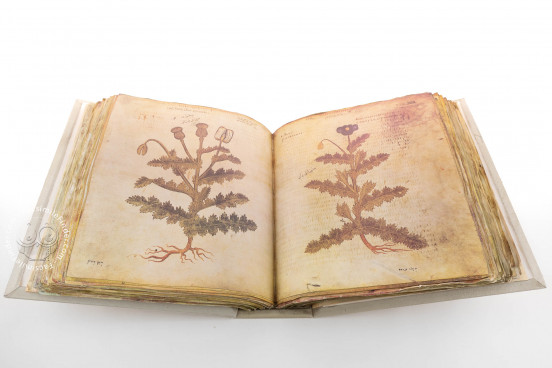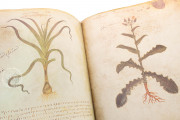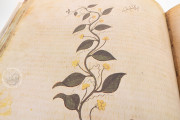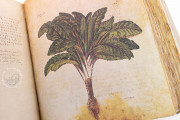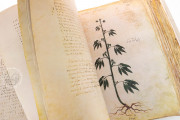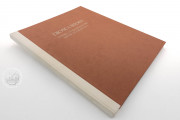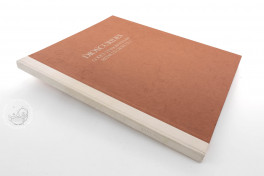The Vienna Dioscorides—also known as the Juliana Anicia Codex—is a miscellany of natural history produced in Constantinople around 512. It was made as a gift for the princess Anicia Giuliana, daughter and wife of Roman emperors. The main text describes hundreds of medicinal plants, most of which are illustrated in paintings filling a whole page. The manuscript further boasts six frontispiece miniatures and a decorated title page (fols. 1-7). It is one of the very few illuminated manuscripts of the work of ancient Greek authors to survive from late antiquity.
The Vienna Dioscorides takes its name from the city where the manuscript is now kept and the first-century Greek physician Dioscorides Pedanius, who is the author of its longest text, a Greek herbal known by its Latin title De materia medica.
Of Enduring Interest
The codex had an enormous influence for several centuries and is the ancestor of numerous manuals of medicinal plants of the Middle Ages and the early modern period. With the increasing interest in medicinal herbs in modern times, the Vienna Dioscorides is gaining even wider recognition and was placed on UNESCO's Memory of the World Register in 1997.
A Book for a Princess
The manuscript's dedication picture is the earliest dedication miniature to survive in all of book history. The Byzantine princess Anicia Giuliana, who endowed a church in Constantinople, is shown being presented the precious codex as a gift from the citizens of the district where the church was erected (fol. 6v). She is flanked by personifications of her particular virtues, Magnanimity and Prudence.
Hundreds of Plants Described and Pictured
The herbal of Dioscorides is arranged in alphabetical order. It describes the appearance and medicinal uses of 383 plants in Greek Majuscule. Each description is accompanied by a painting of the plant labeled with its name. Transcriptions of the labels were added centuries later in Greek Minuscule as the old majuscule script became difficult to read.
Not Only Plants
Rounding out the manuscript's illumination are more than 100 mostly smaller paintings of coral, a goddess, animals, and birds that illustrate three of the manuscript's shorter texts (on plants, poisons, and birds). A full-page miniature features twenty-four birds in compartments that are not mentioned in the manuscript's texts (fol. 483v).
A Manuscript Consulted, Copied, and Cared For
The Vienna Dioscorides offers a compendium of ancient Greek knowledge in the fields of pharmacy and applied botany. The great esteem for and frequent use of the manuscript over the centuries is manifest from the numerous inscriptions added by later scribes writing in Greek, Latin, Old French, Hebrew, Turkish, and Arabic. The illustrations (but not the text) of the manuscript were copied in the fifteenth century into a picture book of plants, animals, and birds known as the Greek Dioscorides.
In 1406, when the manuscript was in the library of the Constantinopolitan monastery of John Prodromos in Petra, the monk Nathaniel had the manuscript rebound by the notary Johannes Chortasmenos. This binding has since been removed but is preserved. It was Johannes who supplied the Greek Minuscule versions of many of the plant labels. The manuscript later came into the possession of Moses Hamon (d. 1554), a Jewish physician. Maximilian II (1527-1576), Holy Roman Emperor, purchased it in 1569, and it entered the Austrian imperial library in Vienna in 1592. That library was renamed the Österreichische Nationalbibliothek after World War II.
We have 2 facsimiles of the manuscript "Vienna Dioscorides":
- Dioscurides. Codex Vindobonensis Med. Gr. 1 facsimile edition published by Akademische Druck- u. Verlagsanstalt (ADEVA), 1970
- Pedacio Dioscorides Anazarbeo, De Materia Medica facsimile edition published by Edilan, 1978

